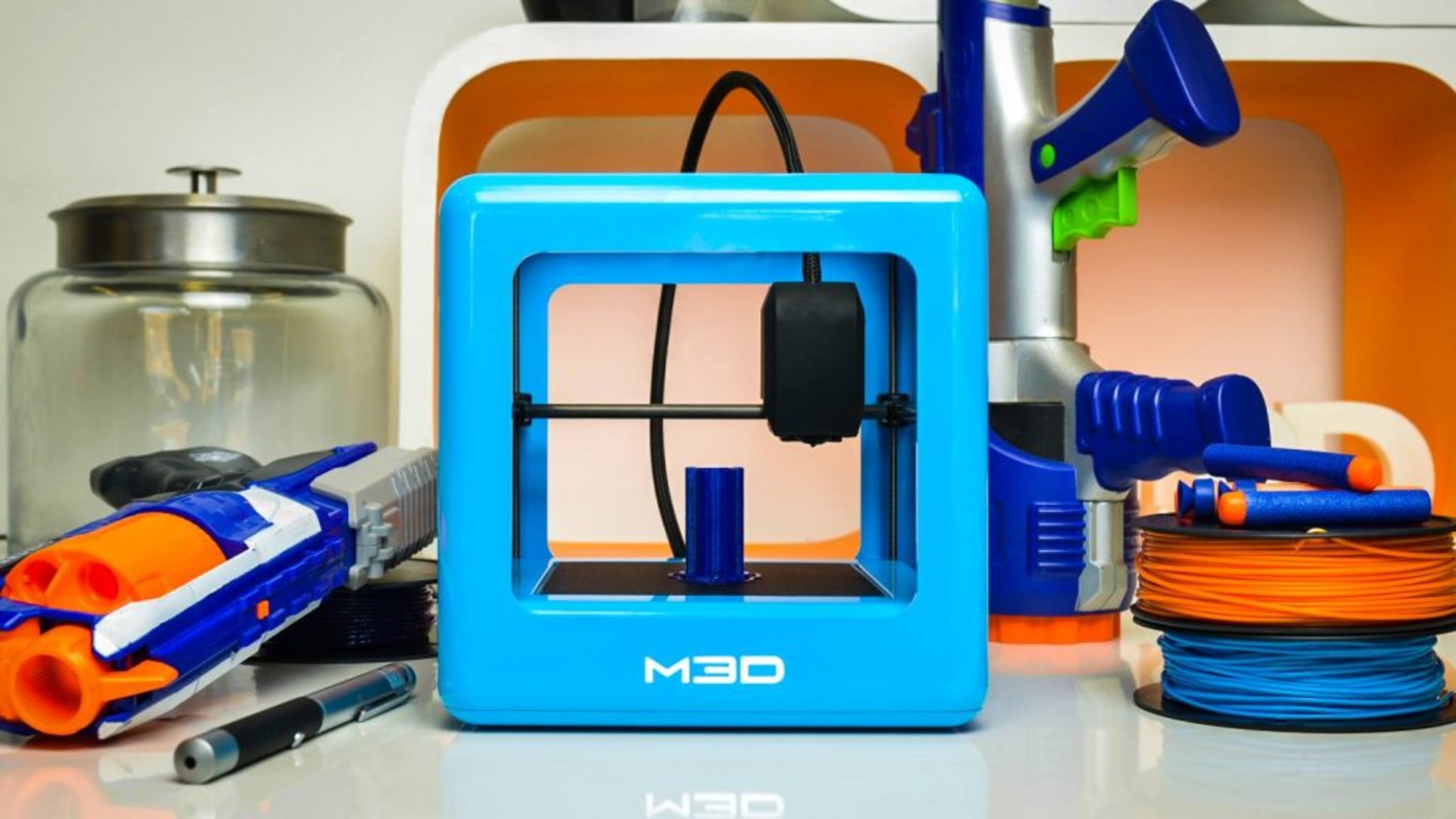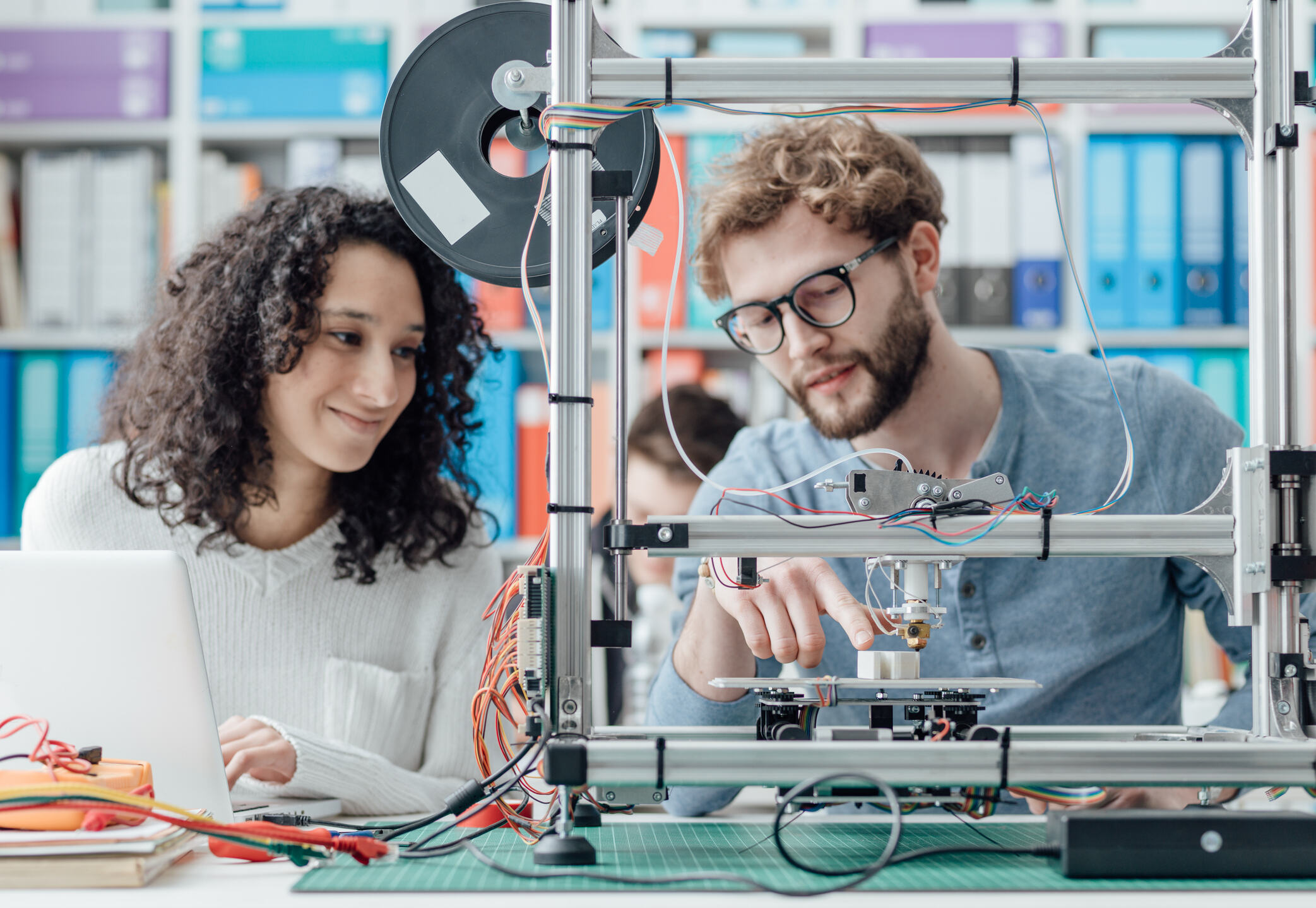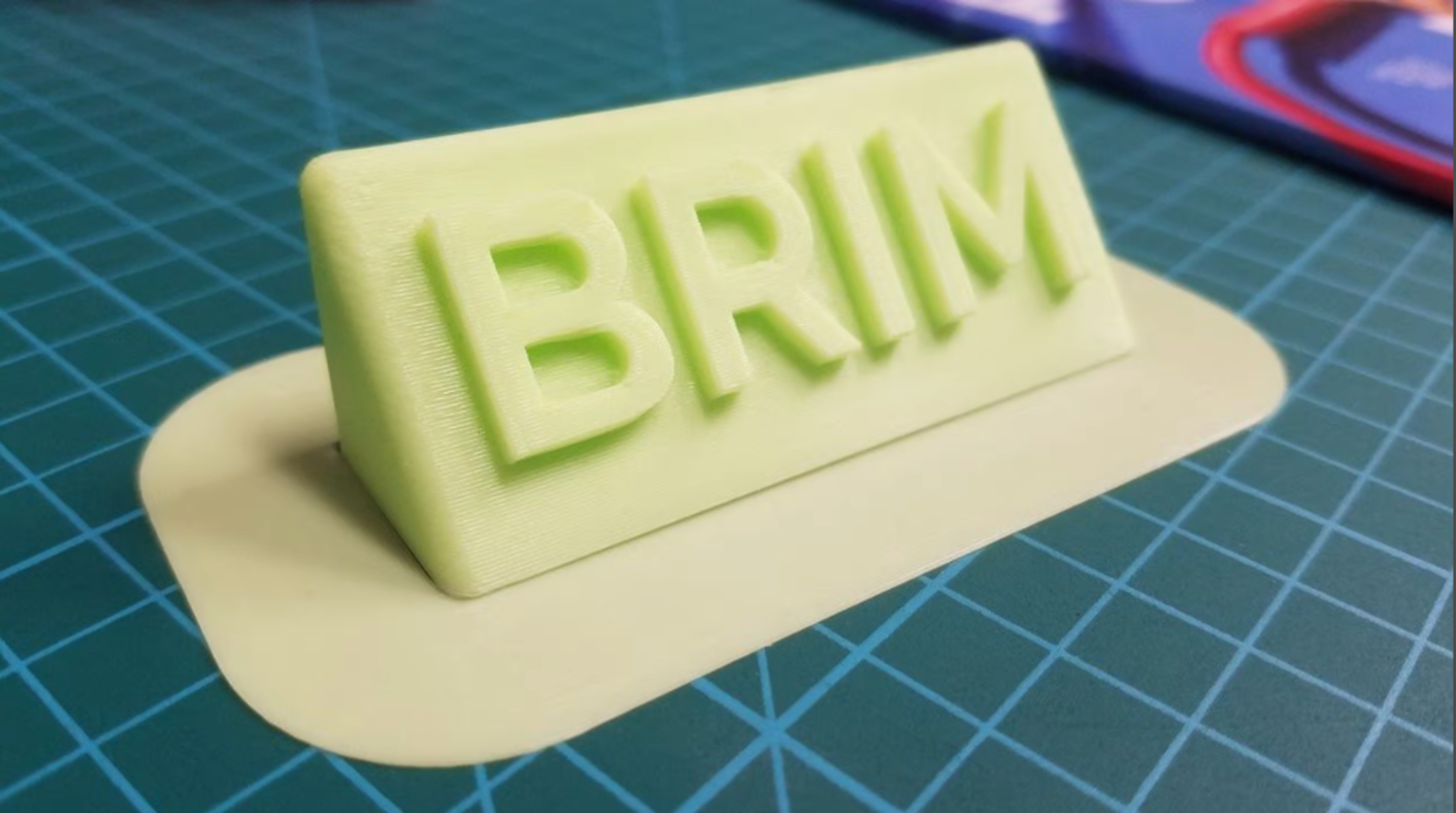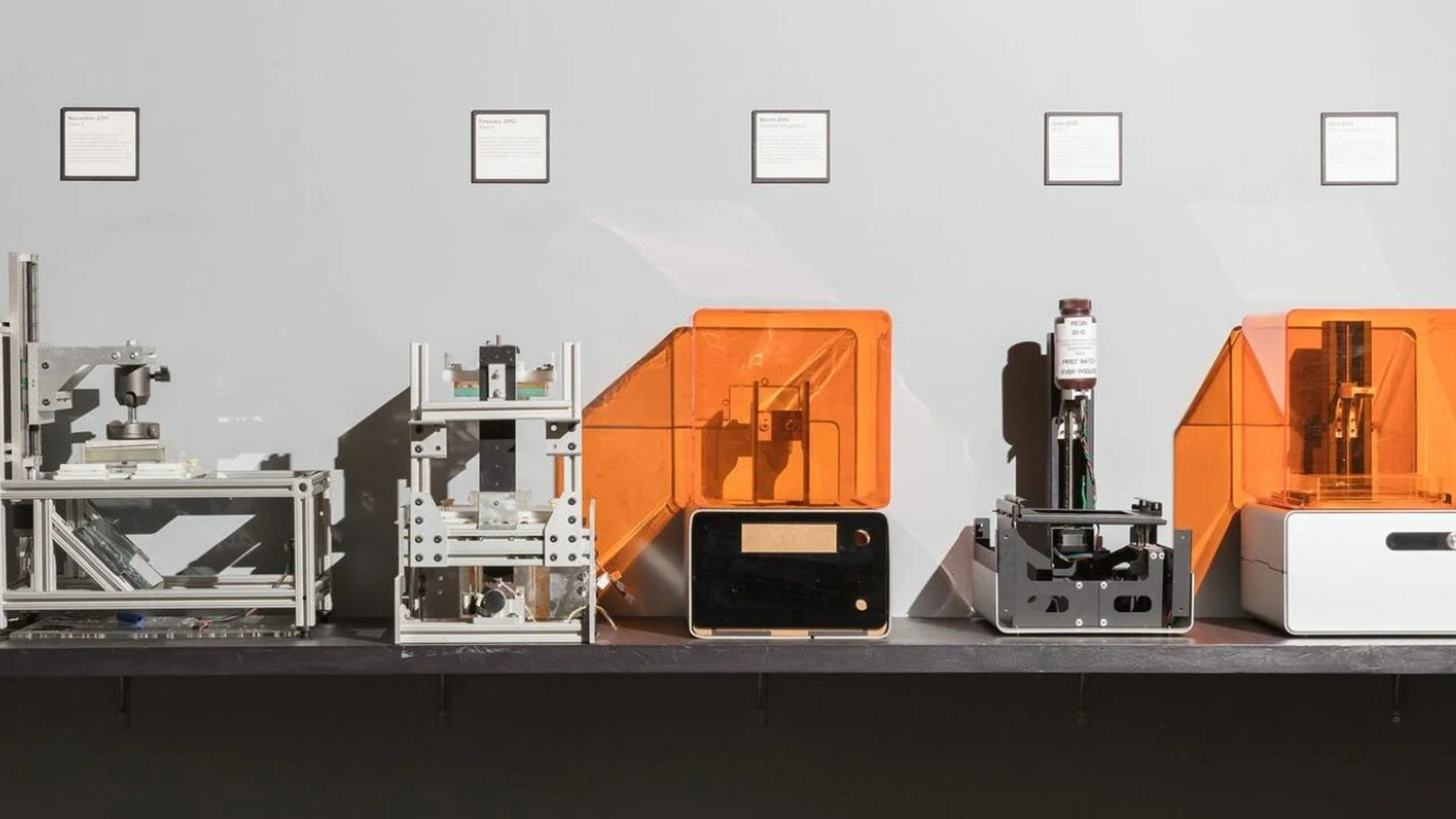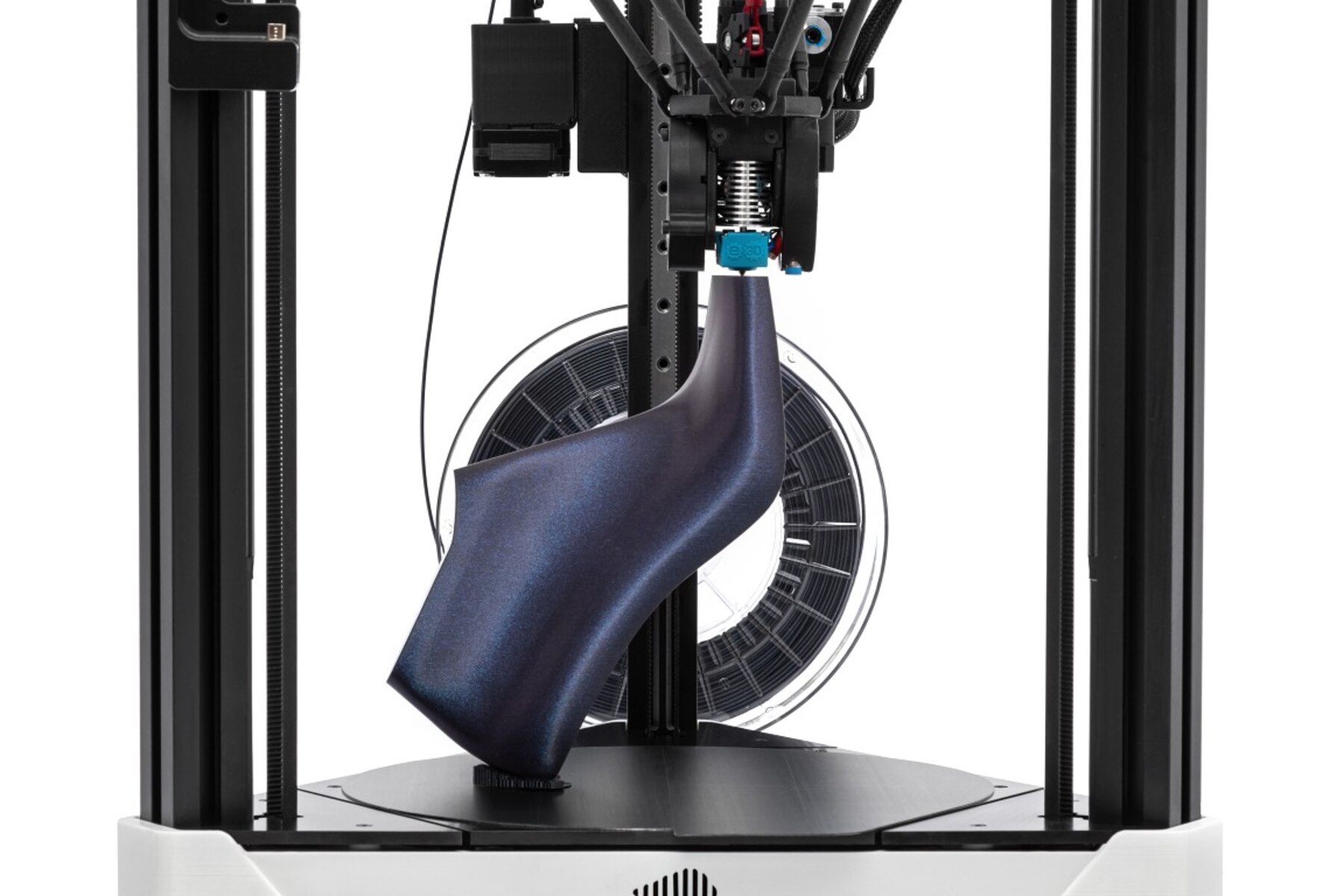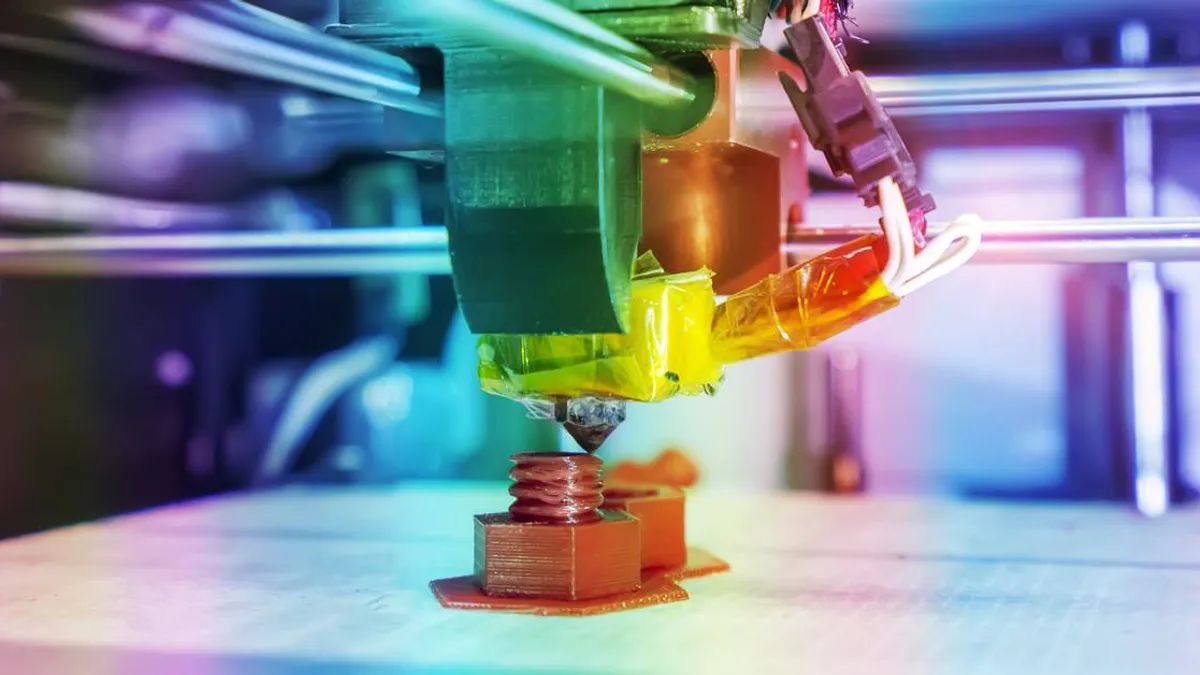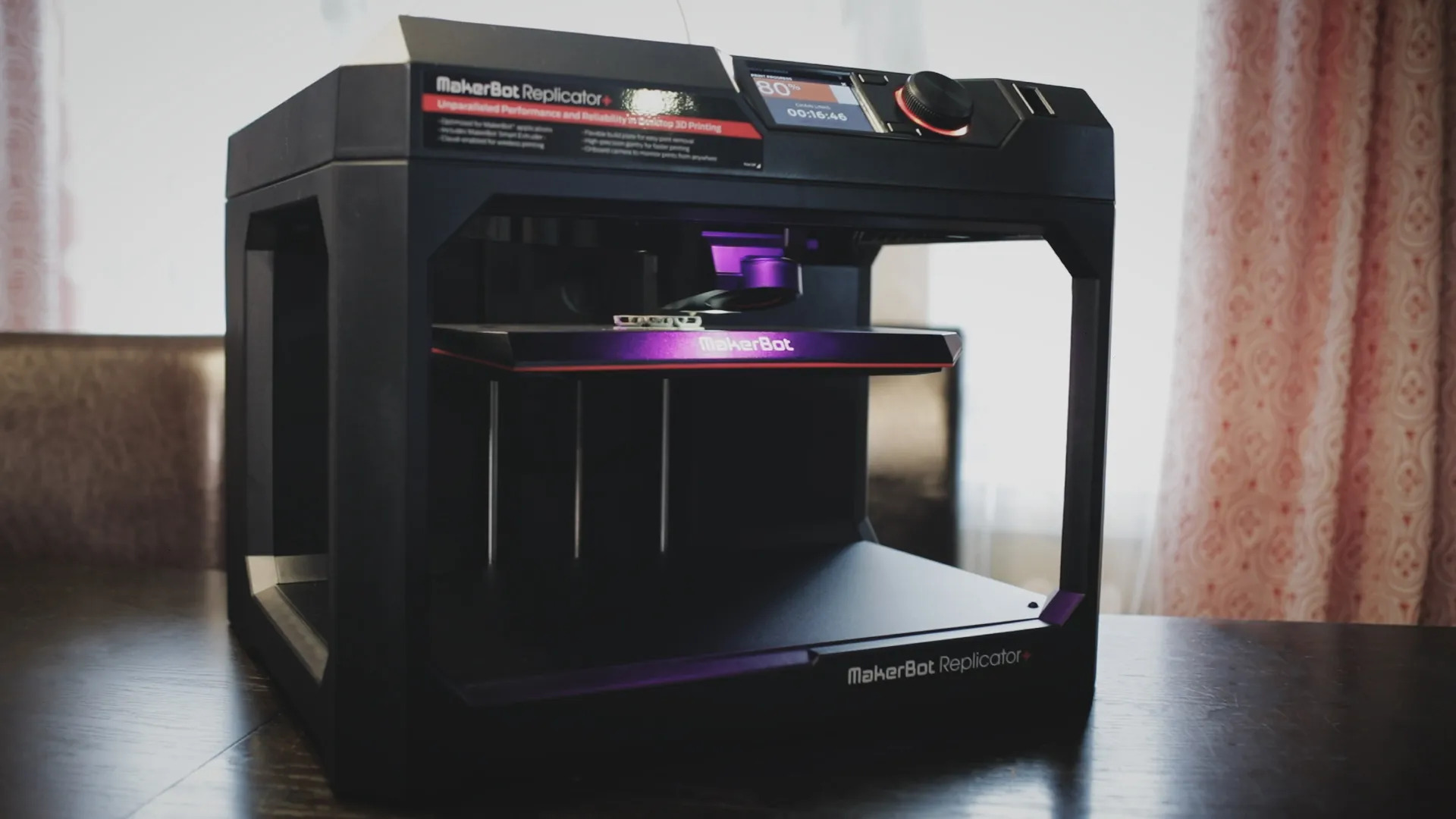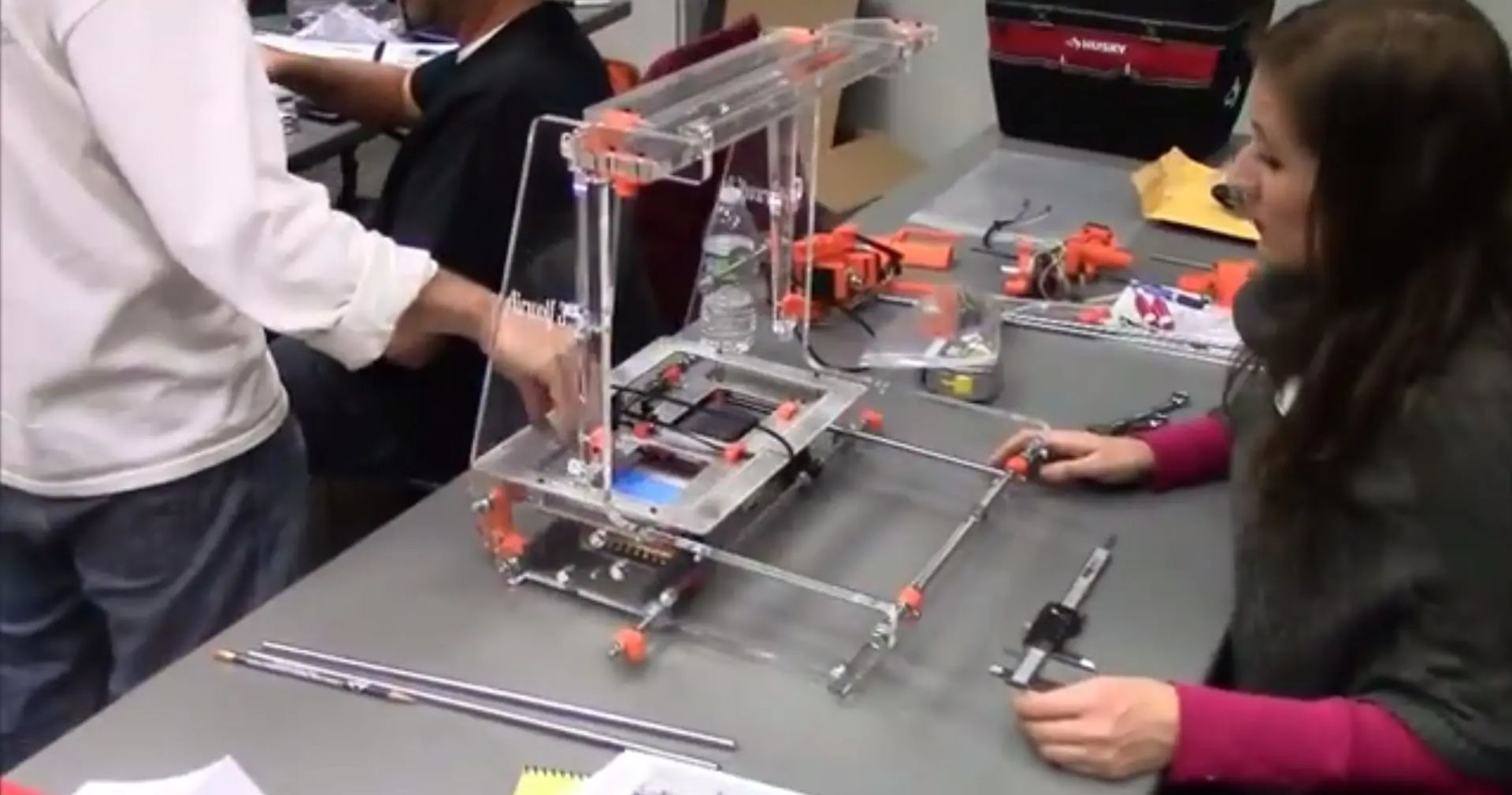Introduction
In today’s rapidly evolving technological landscape, 3D printing has emerged as a groundbreaking innovation with the potential to revolutionize various industries. This cutting-edge technology, also known as additive manufacturing, allows for the creation of three-dimensional objects by layering materials on top of each other based on a digital design. While 3D printing initially gained recognition for its ability to create prototypes quickly and cost-effectively, its applications have expanded far beyond that realm.
With its versatility and ability to produce complex structures with precision, 3D printing is being embraced across an array of sectors, fueling innovation and transforming traditional practices. From the healthcare sphere to the automotive industry, from art and design to the food sector, the possibilities offered by 3D printing are vast and ever-expanding.
Through this article, we will explore the numerous applications of 3D printing, showcasing how this technology is being utilized in various domains to push the boundaries of what is possible. From rapid prototyping to personalized manufacturing, from medical advancements to sustainability initiatives, the impact of 3D printing stretches across industries, proving to be a game-changer for businesses and consumers alike.
So, join us on this exciting journey as we dive into the fascinating world of 3D printing and uncover the innovative ways it is reshaping our present and shaping our future.
Rapid Prototyping
Rapid prototyping is one of the primary applications of 3D printing and has revolutionized the product development process. Traditionally, creating a prototype would involve time-consuming and expensive methods such as CNC machining or injection molding. However, with 3D printing, designers and engineers can quickly turn their digital models into physical prototypes.
By using 3D printing technology, companies can significantly reduce the time and cost associated with prototyping. This enables them to iterate and refine their designs more efficiently, leading to faster product development cycles and a competitive edge in the market. Additionally, 3D printing allows for the production of complex geometries and intricate details that may be challenging or impossible to achieve with traditional manufacturing techniques.
Industries such as automotive, aerospace, and consumer electronics heavily rely on rapid prototyping through 3D printing. For example, in the automotive sector, 3D printed prototypes are used to test vehicle components, including engine parts, interior elements, and even entire car bodies. This streamlines the development process, accelerates innovation, and enables manufacturers to bring new vehicles to market faster than ever before.
Moreover, rapid prototyping with 3D printing benefits other sectors as well. In architecture and construction, architects use 3D printed models to visualize and refine their designs, helping them communicate their ideas more effectively to stakeholders. In the medical field, doctors can create patient-specific models for surgery planning, reducing the risks associated with complex procedures. Even in the fashion industry, designers leverage 3D printing to create prototype garments, allowing them to visualize and perfect their designs before mass production.
Overall, rapid prototyping is one of the most transformative applications of 3D printing. By offering a faster, more cost-effective, and highly customizable approach to prototyping, this technology empowers innovators and designers to bring their visions to life with ease and efficiency.
Customization and Personalization
One of the most exciting aspects of 3D printing is its ability to enable customization and personalization on a whole new level. Unlike traditional manufacturing methods that rely on mass production and standardized designs, 3D printing allows for the creation of unique, tailor-made products.
With 3D printing, consumers can have greater control over the design, shape, and functionality of the products they desire. Whether it’s custom-made jewelry, personalized phone cases, or bespoke home decor, individuals can now turn their ideas into reality with the help of this technology. They can have input in the design process, ensuring that their preferences and specifications are met.
This level of customization is particularly valuable in industries such as healthcare, where patient-specific products are crucial. 3D printing has enabled the production of personalized medical devices, prosthetics, and implants that perfectly fit each patient’s unique anatomy. This not only improves comfort and functionality but also enhances overall patient outcomes.
Furthermore, 3D printing allows for the creation of intricate and complex designs that were once difficult to manufacture. Artists, designers, and architects are utilizing this technology to push the boundaries of creativity. They can bring their imagination to life, developing intricate sculptures, complex architectural models, and visually stunning artworks that were previously unachievable.
From a business perspective, customization and personalization through 3D printing have opened up new opportunities for entrepreneurs. Small-scale manufacturers can offer personalized products without the need for large-scale production, appealing to niche markets and individual consumer preferences. This allows for the creation of unique, one-of-a-kind products and fosters a sense of exclusivity and individuality.
Overall, 3D printing has empowered consumers to be active participants in the design and creation process. It has transformed the way products are made, shifting from a one-size-fits-all approach to a personalized and customizable experience. With the ability to cater to individual needs and preferences, 3D printing is revolutionizing how we perceive and interact with the products we use in our daily lives.
Manufacturing Parts and Components
3D printing is rapidly gaining traction in the manufacturing industry as an alternative production method for parts and components. Traditional manufacturing processes, such as injection molding and subtractive manufacturing, often involve time-consuming setup, tooling, and machining processes. In contrast, 3D printing simplifies the manufacturing process by directly fabricating parts layer by layer, eliminating the need for complex tooling and reducing production time.
This technology has proven particularly beneficial for producing low-volume or specialized parts with complex geometries. It allows for the creation of intricate designs and internal structures that cannot be achieved through traditional manufacturing methods. Parts that require lightweight and high-strength characteristics, such as those used in aerospace and automotive industries, can be manufactured using 3D printing with advanced materials.
Additionally, 3D printing offers greater design freedom, enabling engineers and designers to iterate and optimize part designs quickly. They can create complex assemblies and consolidate multiple components into a single part, reducing assembly time and improving overall product efficiency.
Another advantage of 3D printing in manufacturing is the ability to produce on-demand and decentralized production. By utilizing location-specific 3D printing facilities, parts can be printed and delivered locally, reducing transportation costs and lead times. This decentralized approach also allows for customizing and tailoring parts to specific geographic requirements.
Furthermore, 3D printing can support the manufacturing of replacement parts and obsolete components, prolonging the lifespan of machinery and equipment. This is particularly valuable in industries where spare parts become scarce and expensive over time. By utilizing 3D printing, manufacturers can produce parts on demand, eliminating the need for costly inventory management and reducing downtime.
Overall, 3D printing is revolutionizing the manufacturing industry by offering a more efficient, cost-effective, and flexible approach to producing parts and components. Its ability to create complex designs, optimize product functionality, and facilitate just-in-time production makes it a valuable tool for manufacturers seeking to stay competitive in today’s rapidly evolving market.
Medical Applications
The field of medicine has experienced a profound transformation with the integration of 3D printing technology. From surgical planning to the creation of patient-specific medical devices, 3D printing is revolutionizing healthcare in countless ways.
One of the most significant applications of 3D printing in medicine is in the production of patient-specific anatomical models. Surgeons can now utilize 3D printing to create highly accurate replicas of a patient’s organs or body parts based on medical imaging data. These models provide a tangible and realistic visualization, aiding in surgical planning and enhancing the precision and effectiveness of complex procedures.
Besides surgical planning, 3D printing is also instrumental in the creation of custom-made medical devices and prosthetics. By leveraging 3D printing technology, healthcare providers can produce implants, dental crowns, hearing aids, and other devices that perfectly match an individual’s unique anatomy. This level of customization improves the comfort, functionality, and overall quality of life for patients, reducing the risk of complications and promoting better health outcomes.
In the field of regenerative medicine, 3D printing offers exciting possibilities for tissue engineering and organ transplantation. Researchers are using 3D bioprinting to create patient-specific tissues and organs by layering living cells in a precisely controlled manner. While the development of fully functional organs is still in its early stages, this technology holds tremendous potential for addressing the organ shortage crisis and improving the success rates of transplant surgeries.
Furthermore, the accessibility and cost-effectiveness of 3D printing enable medical facilities in remote or underserved areas to produce essential medical equipment and supplies. From face shields and ventilator components to customized surgical tools, 3D printing allows for on-site production, reducing dependence on external suppliers and ensuring the availability of critical resources in times of need.
Overall, the medical applications of 3D printing are transforming the healthcare industry, empowering healthcare professionals to provide personalized, efficient, and cutting-edge care. By leveraging this technology, physicians and researchers are pushing the boundaries of what is possible and improving patient outcomes in a variety of medical scenarios.
Education and Research
3D printing has immense potential in the field of education and research, revolutionizing the way we learn, teach, and conduct scientific investigations. This technology offers unique opportunities to engage students, foster creativity, and explore complex concepts in a hands-on, tangible manner.
In educational settings, 3D printing allows students to transform abstract ideas into physical objects. It promotes a deeper understanding of STEM (science, technology, engineering, and mathematics) subjects by enabling students to design, prototype, and test their ideas. By actively participating in the 3D printing process, students develop problem-solving skills, critical thinking abilities, and a sense of innovation.
Moreover, 3D printing enhances the study of complex anatomical structures, geological formations, and archaeological artifacts. Students can create accurate replicas of fossils, historic artifacts, and biological specimens, facilitating hands-on learning experiences and fostering a deeper appreciation for the subject matter.
In research fields, 3D printing has become an indispensable tool for scientists and engineers. Researchers utilize this technology to fabricate custom laboratory equipment, enabling them to develop experimental setups that are tailored to their specific research needs. It also allows for the creation of advanced prototypes and miniaturized models for testing and analysis.
Furthermore, 3D printing enables researchers to innovate in areas like material science, robotics, and bioengineering. They can leverage this technology to explore new materials, develop intricate structures, and push the boundaries of what is possible. This aids in the advancement of scientific knowledge, facilitates breakthrough discoveries, and drives progress in various fields of study.
Additionally, 3D printing promotes collaboration and knowledge sharing among researchers and educators. Designs and 3D printing files can be shared online, allowing for the exchange of ideas and resources across geographical boundaries. This facilitates the replication and verification of research findings, accelerating the pace of scientific inquiry.
Overall, 3D printing is an invaluable resource in educational institutions and research organizations. It empowers students to become active participants in their own learning and enhances the capabilities of researchers to explore, innovate, and disseminate knowledge. As this technology continues to advance, its impact on education and research will only grow, opening new horizons for discovery and academic growth.
Art and Design
In the world of art and design, 3D printing has emerged as a transformative tool, pushing the boundaries of creativity and redefining traditional artistic practices. This technology provides artists and designers with new avenues for expression, enabling the realization of intricate and complex designs that were once only conceptual.
One of the key benefits of 3D printing in art and design is its ability to bring digital creations into the physical realm. Artists can now translate their digital models and virtual concepts into tangible objects with intricate details and precise dimensions. This technology allows for the production of complex sculptures, intricate jewelry, and visually stunning art installations that were previously unachievable.
With 3D printing, artists and designers can experiment with innovative materials, textures, and forms. The flexibility of this technology enables the creation of intricate patterns, intricate geometries, and custom textures that add depth and uniqueness to artistic creations.
Besides creating standalone artworks, 3D printing also facilitates the prototyping and production of functional objects with artistic flair. From furniture designs and lighting fixtures to decorative elements and fashion accessories, this technology allows for the integration of artistic aesthetics into everyday objects.
Moreover, 3D printing opens up new possibilities for collaborative artistic endeavors. Artists can share their designs electronically, allowing others to modify and expand on their concepts. This collaborative aspect fosters a vibrant creative community where ideas can be shared, merged, and refined, leading to the development of truly innovative artworks.
The accessibility of 3D printing has democratized the art and design world, providing opportunities for emerging artists and designers to showcase their talents. It eliminates the need for expensive manufacturing processes and large-scale production, allowing artists to produce their works on-demand and in small quantities. This has led to the rise of independent artists and designers who can bring unique, personalized creations to a broader audience.
Overall, 3D printing has revolutionized the art and design landscape by offering artists and designers a new realm of possibilities. From creating intricate sculptures to functional art pieces, this technology has pushed the boundaries of creativity and paved the way for innovative and awe-inspiring works that captivate audiences worldwide.
Food and Culinary Creations
3D printing has made its way into the world of gastronomy, opening up exciting possibilities for food and culinary creations. Chefs and food technologists are harnessing this technology to innovate in the kitchen, creating intricate and visually stunning dishes that push the boundaries of culinary art.
One of the key advantages of 3D printing in the culinary world is the ability to create customized and intricate food designs. With this technology, chefs can fabricate complex shapes, textures, and patterns that would be extremely challenging to achieve using traditional cooking methods. From decorative elements to personalized cake toppers, 3D printing allows for artistic expression and culinary customization.
Furthermore, 3D printing enables chefs to experiment with different ingredients and flavor combinations. By precisely layering ingredients, it is possible to create unique and innovative culinary creations, amalgamating unexpected tastes and textures. This opens up a whole new world of possibilities for flavor exploration and culinary invention.
For individuals with dietary restrictions or special nutritional needs, 3D printing offers a solution for personalized and tailored meals. By controlling the composition and arrangement of ingredients, chefs can design meals that align with specific dietary requirements, making it easier to accommodate individual preferences and restrictions.
In addition to enhancing the visual appeal and customization of dishes, 3D printing also brings efficiency to the culinary world. Chefs can prepare intricate components in advance and assemble them seamlessly, reducing preparation time and streamlining the plating process. This allows for greater precision and consistency, ensuring that each dish is presented flawlessly.
The application of 3D printing in food production extends beyond fine dining restaurants. It has the potential to revolutionize food production in areas like space travel, where the creation of nutritious and sustainable meals is essential. By utilizing 3D printers to produce food in space, astronauts can have access to fresh, customized, and safe meals, while minimizing food waste and logistical challenges.
Overall, 3D printing is transforming the culinary landscape by providing chefs with a new medium for artistic expression and culinary innovation. From intricate designs to precision in plating, this technology is revolutionizing the way food is created, enhancing both the visual appeal and the culinary experience.
Construction and Architecture
3D printing has emerged as a game-changer in the fields of construction and architecture, offering innovative solutions for designing and building structures with unprecedented speed, efficiency, and flexibility. This technology has the potential to revolutionize the construction sector, transforming traditional construction methods and opening up new possibilities for architectural design.
One of the primary advantages of 3D printing in construction is its ability to fabricate complex and customized components with minimal human intervention. By utilizing large-scale robotic 3D printers, it is possible to construct buildings layer by layer, precisely depositing the building material and creating intricate shapes that would be difficult to achieve using traditional construction techniques.
3D printing in construction also allows for greater design freedom. Architects can explore avant-garde and innovative designs that go beyond the limitations of traditional building techniques. This technology enables the creation of unique and eye-catching architectural structures that push the boundaries of what is considered possible.
Moreover, 3D printing streamlines the construction process, reducing construction time and labor costs. With the ability to automate various construction tasks, this technology eliminates certain manual processes and accelerates the overall project timeline. This not only enhances efficiency but also minimizes errors and waste in the construction process.
Additionally, 3D printing offers sustainability benefits in construction by minimizing material waste and reducing environmental impacts. With conventional construction methods, a significant amount of construction materials end up as waste. However, 3D printing allows for precise and controlled material usage, optimizing resource utilization and reducing construction waste.
Furthermore, 3D printing in construction has the potential to address housing shortages and improve disaster relief efforts. With its ability to rapidly build low-cost and customizable structures, 3D printing can help provide affordable housing solutions in high-demand areas. This technology also allows for the quick deployment of temporary or emergency shelters in disaster-stricken regions, providing people with safe and durable living spaces in times of crisis.
Overall, 3D printing is reshaping the construction and architectural industries by introducing a paradigm shift in design, construction processes, and material utilization. With its ability to optimize resources, accelerate construction timelines, and enable innovative designs, this technology holds immense potential for driving sustainable, efficient, and visionary building practices.
Automotive and Aerospace Industries
The automotive and aerospace industries are experiencing a significant transformation with the incorporation of 3D printing technology. This innovative technology has revolutionized manufacturing processes, enabling greater efficiency, customization, and advancements in both industries.
In the automotive sector, 3D printing has brought about remarkable changes in prototyping and production. This technology allows automakers to rapidly create prototypes and make design iterations quickly, reducing development time and costs. From concept cars to individual components, 3D printing enables engineers to test and refine designs before committing to large-scale production.
Moreover, 3D printing is increasingly used in the manufacturing of end-use automotive parts. With its ability to produce lightweight and robust components, this technology contributes to the improvement of fuel efficiency, performance, and overall vehicle safety. From engine parts to personalized interior elements, 3D printing offers automakers the flexibility to create unique and custom-designed components.
In the aerospace industry, 3D printing plays a significant role in the production of complex and lightweight aircraft parts. With its ability to fabricate intricate geometries and create high-strength components, this technology provides aerospace engineers with new design possibilities. It allows for the optimization of parts, reducing weight while maintaining structural integrity, leading to fuel efficiency and cost savings.
Furthermore, 3D printing aids in the development of personalized and advanced aerospace components. From cabin interiors to engine components, this technology enables the customization of parts to meet specific requirements and preferences. It also facilitates the production of spare parts on-demand, reducing inventory costs and minimizing downtime for aircraft maintenance and repair.
Additionally, 3D printing is accelerating innovation in the aerospace industry by enabling the rapid development of prototypes and advanced technologies. Engineers and researchers can create and test new concepts, such as propulsion systems and satellite components, in a more efficient and cost-effective manner. This contributes to the advancement of space exploration, satellite missions, and other aerospace endeavors.
Overall, 3D printing is transforming automotive and aerospace industries by revolutionizing manufacturing processes, enabling customization, and stimulating innovation. Its ability to produce complex and lightweight parts with high precision and efficiency has significantly impacted the way vehicles and aircraft are designed, manufactured, and maintained.
Sustainability and Recycling
3D printing technology is playing a vital role in driving sustainability and promoting recycling practices across various industries. With its ability to reduce waste, optimize material usage, and facilitate local production, 3D printing is transforming the way we approach sustainability in manufacturing and product development.
One of the key advantages of 3D printing is its potential to minimize material waste. Unlike traditional manufacturing processes that often generate significant amounts of waste through subtractive methods, 3D printing builds objects layer by layer, using only the necessary amount of material. This reduces waste production and contributes to a more sustainable manufacturing process.
Moreover, 3D printing enables the use of recycled and biodegradable materials. By utilizing recycled plastics and other sustainable feedstock, 3D printing contributes to the circular economy by reducing the consumption of virgin resources and decreasing the environmental impact associated with traditional production methods.
With the rise of on-demand and localized production, 3D printing reduces the need for long-distance transportation and warehousing. This has the potential to minimize carbon emissions and energy consumption associated with the logistics of global supply chains. Additionally, as 3D printing allows for localized production, it can help address the environmental impact of transportation by significantly reducing the distance materials and finished products need to travel.
Another sustainability benefit of 3D printing lies in its ability to extend the life cycle of products. By utilizing 3D printing for repairs and replacements, consumers and manufacturers can avoid discarding and replacing entire products when only a specific component is damaged. This minimizes waste and contributes to the overall longevity of products, reducing the environmental footprint.
Furthermore, 3D printing promotes the development and adoption of sustainable design principles. Designers and engineers can optimize designs for 3D printing, focusing on lightweight structures, minimal material usage, and optimized functionalities. This leads to products that are not only environmentally friendly but also efficient in terms of resource consumption, energy usage, and overall performance.
Overall, 3D printing is demonstrating its potential to foster sustainability and recycling across industries. By reducing waste, utilizing recycled materials, and promoting localized production, this technology is changing the way we manufacture and consume goods. Through its sustainable practices, 3D printing is contributing to a greener and more environmentally conscious future.
Conclusion
3D printing has emerged as a revolutionary technology with the power to transform various industries. From rapid prototyping to customization, from medical applications to construction, this groundbreaking innovation is reshaping the way we design, produce, and interact with objects.
In the realm of manufacturing, 3D printing offers unparalleled advantages, such as reduced production time, cost savings, and the ability to create complex geometries. The technology has revolutionized rapid prototyping, enabling designers to iterate and refine their concepts quickly and efficiently. It has also paved the way for customization and personalization, allowing for the creation of individualized products that cater to specific preferences.
The healthcare industry has witnessed remarkable advancements thanks to 3D printing. The ability to create patient-specific anatomical models, medical devices, and even organs has revolutionized surgical planning, improved patient outcomes, and opened new frontiers in regenerative medicine.
3D printing has also made a significant impact in education and research by enhancing hands-on learning experiences, facilitating collaborative research, and pushing the boundaries of knowledge and innovation. In art and design, this technology has unlocked new levels of artistic expression, enabling the creation of intricate and awe-inspiring works.
The automotive and aerospace industries have embraced 3D printing to optimize manufacturing processes, reduce weight, and customize products. This technology has revolutionized prototyping, parts production, and even space exploration.
Furthermore, 3D printing has contributed to sustainability and recycling efforts by minimizing material waste, utilizing recycled materials, and promoting localized production. It has the potential to reduce carbon emissions, extend the life cycle of products, and foster sustainable design practices.
As 3D printing technology continues to evolve and advance, its impact on various industries will only grow. From consumer products to medical advancements, from architectural structures to educational tools, the possibilities offered by 3D printing are limitless.
In conclusion, 3D printing is reshaping industries, driving innovation, and opening up new horizons for creative and functional possibilities. With its ability to revolutionize production processes, promote customization and sustainability, and push the boundaries of design, 3D printing is transforming the way we live, work, and create.







